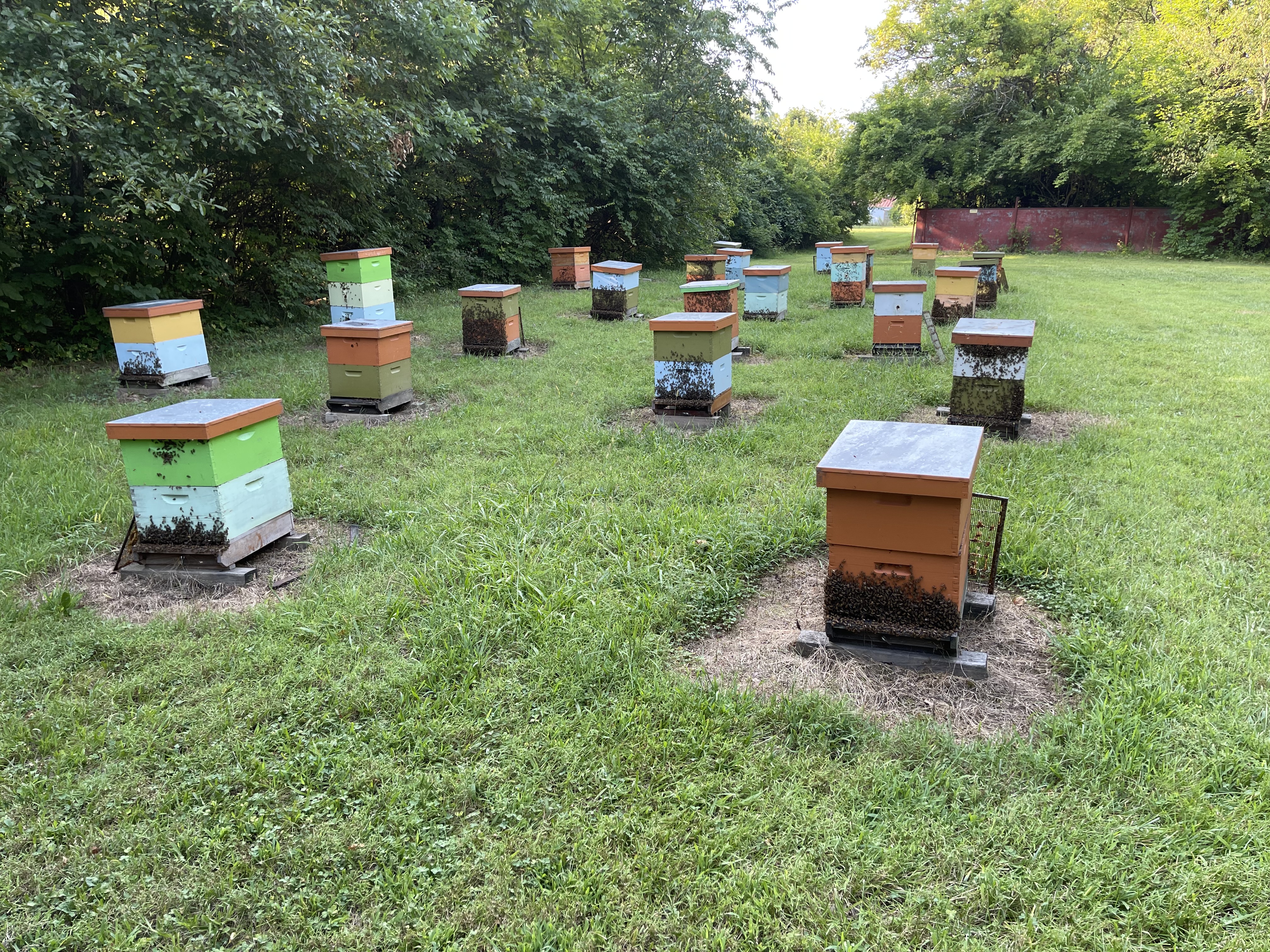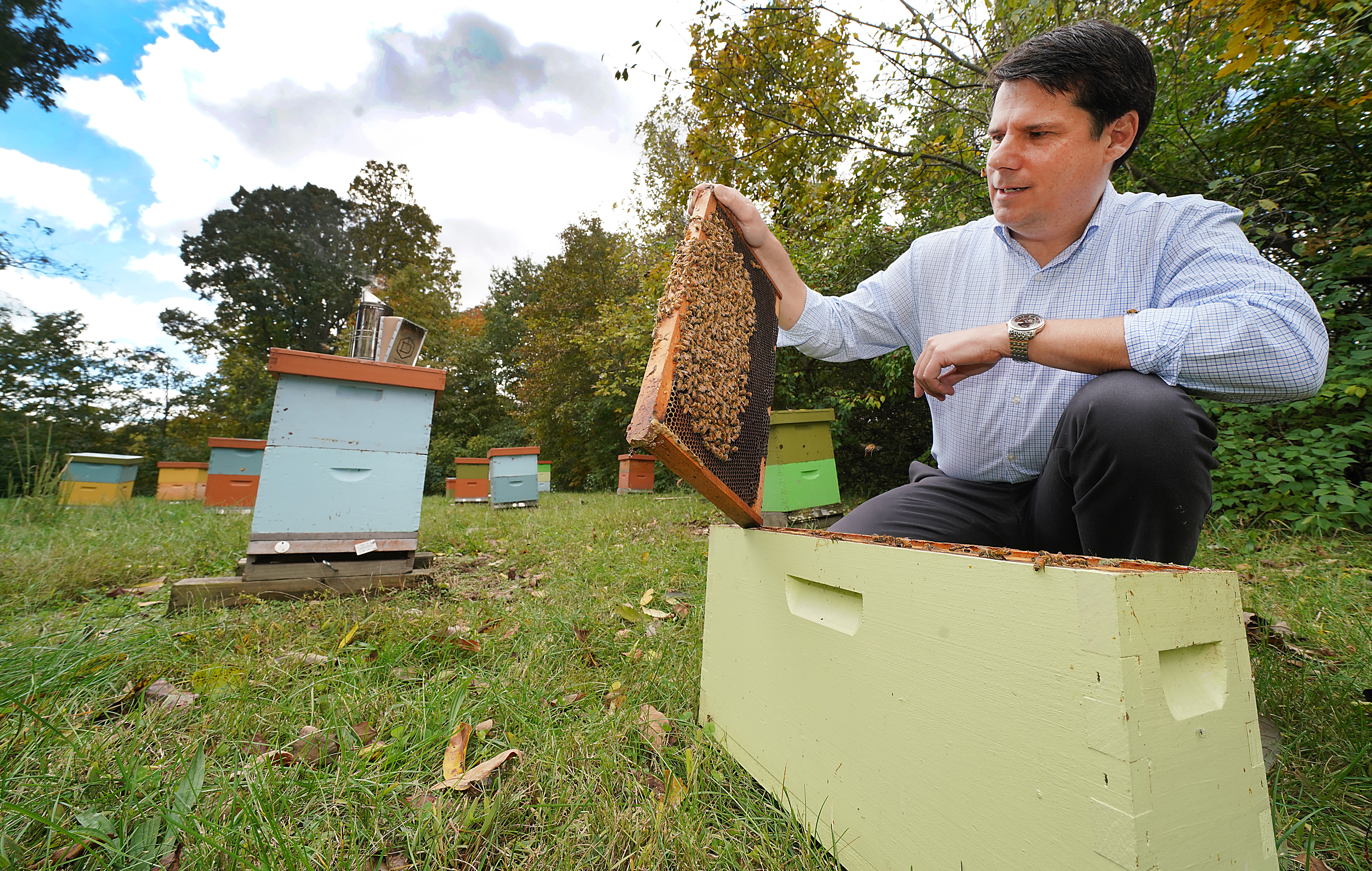Beekeeping breakthroughs: Purdue research strengthens bee colonies for top pollination performance
Amid National Pollinators Month, beekeepers are focusing their efforts on enhancing their bee colonies’ resilience, particularly in preparation for the harsh winter months ahead. Krispn Given, senior apicultural specialist and honeybee breeder in Purdue’s entomology department, is leading research to boost honeybees’ behavioral resistance to the varroa destructor. Originating from Apis cerana (Asian honeybees), varroa destructor are parasitic mites that pose a severe threat by feeding on honeybees’ blood and fat, quickly compromising the immune system. While feeding on the pupae (the inactive, immature form of bees) and adult bees, the mites introduce viruses like deformed wing virus into the bees’ blood, which can cause colony mortality.
Last year, Given treated about 18% of Purdue’s colonies for mites. “If you don’t treat them, colonies could die or, in the worst-case scenario, spread the mites horizontally to neighboring healthy colonies within the breeding population,” he explained. Despite successful breeding efforts at Purdue that mitigate mites, treatments are sometimes necessary.
Beekeepers rely on miticides, such as thymol-based products and oxalic acid, to effectively eliminate approximately 90% of mites. However, since bees tend to dislike these products due to rapid volatilization and unpleasant odors in warm weather, breeding honeybees with natural mite-biting behaviors offers a more promising solution.
“In 1997 we started a hierarchical breeding program at Purdue where for the first 10 years we looked at colonies that grew the fewest mites, successfully survived the winter, and had relatively good honey reserves and general disease resistance,” Given explained. “During this period, I noticed some mites were missing legs, indicating that some bees were responding to the population of mites by chewing off the legs and occasionally inflicting damage to the shield of the mites (idiosoma) – a form of social immunity. We call this new strain of honeybees the Indiana Mite-biters.”
Given’s research prompted active reduction of the mite population. By 2007, The Purdue Bee Lab found that approximately 4% of mite population was damaged due to mite-biting behavior. Through controlled breeding efforts using instrumental insemination, Given reported that by 2015, 50% of the mite population was showing damage from increased mite biting.
“Right now, it’s plateaued around 50%, which is still fantastic. Honeybees are fighting back, and the colonies are overall healthier because they have fewer mites.”
- Krispn Given
To meet the demand for local survivor stock–honeybees that have survived winter with varroa destructor without chemical treatments–Purdue collaborates with Midwest beekeepers. This partnership integrates locally adapted stocks into the breeding program, ensuring bees thrive in northern climates. One approach involves testing queens from local beekeepers in a controlled yard before incorporating them into Purdue’s breeding program, safeguarding against undesirable traits and preventing long-term detrimental effects.
“Our goal is to have a gentle bee that reduces the mite population, adapts to winters well and produces a surplus honey crop,” Given emphasized.
His future research will focus on continued selection for behavioral resistance to the varroa mite to improve honeybee health. “Bee breeding is a road with no ending. You must constantly select for the desired traits of interest, otherwise they can be lost within a few generations,” Given noted.
Given also offers advanced courses: one in queen rearing, focusing on creating multiple queens quickly and efficiently, and another in instrumental insemination, facilitating precise matings.
For those interested in supporting the honeybee population during pollination season, Given advocates planting bee-friendly flowers like clovers, plantains, basswoods, and black locusts.
Honeybees are the supreme pollinators of crops. What makes them number one is the sheer numbers and they are also flower constant, meaning they will only go to one plant type and not cross them. A lot of our colored fruits and vegetables are influenced by honeybees–apples, pears, oranges, many things that we like–so imagine a world without honeybees.”
- Krispn Given




